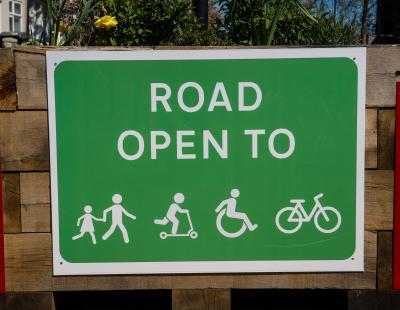The creation of Low Traffic Neighbourhoods (LTNs) is supported, promoted and actively funded by the current government and they are something that we have given a lot of detailed thought to over recent years.
Since 2018, when we undertook one of the largest listening exercises we’ve ever done to help form the Central 6 Regeneration Masterplan, we have been considering ways to address a key issue that has been consistently raised to us – there is too much traffic, going too quickly, along residential streets.
LTNs are one tactic that we can use to address this problem. LTNs use traffic filters, like bollards, planters or cameras that stop vehicles from using certain streets as a through-road – more commonly known as ‘rat running’ – yet allow all homes in LTN areas to retain vehicle access.
That being said, we know that “low traffic neighbourhood” isn’t a particularly helpful term. What we really mean by LTNs is a commitment to make our residential streets safer, cleaner and greener – and who wouldn’t want that?
We have seen excellent cases of where these types of scheme have worked – most notably in areas of London. They have worked because the people living in them, and many others who routinely use these areas, have changed their travel behaviour – taking fewer short local journeys by car and walking or cycling more.
Therefore, our proposals to introduce experimental LTNs in the Orford and Westy areas of Warrington are aimed at reducing through-traffic and improving conditions for people living in the area, as well as making it safer for pedestrians and cyclists. These proposals came about from the broad key themes raised when pulling together our Central 6 Regeneration Masterplan, alongside a dedicated, scheme-specific consultation. The consultation on the Orford and Westy LTN schemes was supported by press releases, social media and web updates, alongside physical engagement sessions and direct letter drops to households within the proposed areas.
Changes in travel behaviour don’t happen overnight, and we do recognise that sometimes proposals on schemes which aim to change common travel habits, and how our places work, can be unpopular.
We knew that proposals for our Westy and Orford LTN schemes would not have unanimous support – the data shows that this is never the case with LTNs – but we believe that LTNs are going to be a vital tool in delivering against several of our local policy commitments – such as combatting the climate emergency, improving air quality, supporting healthier and more active lives of our residents – as well as fulfilling national policy objectives to support more people to walk and cycle.



